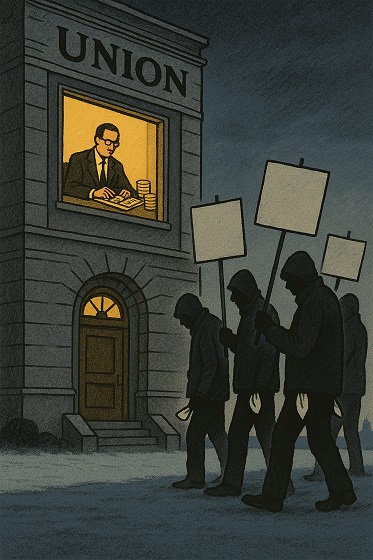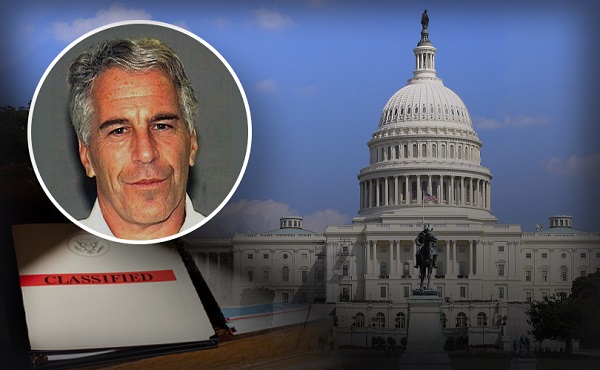Sports
Ice dancers Tessa Virtue, Scott Moir named team of the year
TORONTO — The pressure at Gangneung Ice Arena was palpable. The world was watching. But in what was among the most memorable four minutes of the Pyeongchang Olympics, Tessa Virtue and Scott Moir delivered the skate of their lives.
A world record total score, and a third gold medal that made the Canadian ice dance darlings the most decorated figure skaters in Olympic history. Virtue and Moir perfectly executed a golden plan they’d announced — to mixed reviews — when they’d returned to the sport 18 months earlier.
“When we announced our comeback, no one was happy, competitors, skaters, family, friends, even our governing body, everyone was surprised, because it was such a risk,” Virtue said. “Maybe because we believed in ourselves and believed in what we could pursue, we felt there was so much more to do.”
On Friday, Virtue and Moir were rewarded for their historic comeback performance by winning the The Canadian Press team of the year award for 2018. The ice dancers picked up 39 of 54 votes (72.2 per cent) in a poll of writers, broadcasters and editors from across the country.
“Virtue and Moir … it’s up there with Torvill and Dean now,” said Wayne Chamberlain, sports editor of Postmedia’s Editorial Services. “They captivated a global audience with their swan song performance and made many a Canadian eye tear up.”
The Canadian junior hockey team that won gold at the 2018 world junior championships in Buffalo was second with five of 54 votes (9.3 per cent), while Laval’s football team that went undefeated and captured the Vanier Cup was third with four votes (7.4 per cent).
“It’s so incredible, I was looking back at the history of this (award) to get some perspective and just trying to understand how 10 months later people still seem to care, or remember us, and it’s a great moment to reflect,” Virtue said. “Of course it’s the end of the year, but 10 months after the Games, it’s a nice chance to just take a moment and reflect on the impact at the Olympics had across Canada.”
Golfer Brooke Henderson captured the Bobbie Rosenfeld Award on Wednesday as the year’s top female athlete, while freestyle skier Mikael Kingsbury won the Lionel Conacher Award as the top male athlete on Thursday.
Partners for two decades, Virtue, from London, Ont., and Moir, from Ilderton, Ont., had been melting hearts since they claimed gold at the 2010 Vancouver Games. They stepped away from the sport for two seasons after their silver in Sochi, returning with a single-minded focus of gold in South Korea.
Virtue and Moir held a slim lead over Gabriella Papadakis and Guillaume Cizeron of France after the short dance, despite the fact Papadakis skated most of the program with the clasp of her dress broken.
The next night, when Papadakis and Cizeron recorded a world record in the free dance, Virtue and Moir were waiting in the wings fingers in ears. They purposely didn’t look at any television monitors.
Then Virtue, in a gauzy backless red dress, and Moir, channelling his inner Ewan McGregor, brought the crowd to its feet with their breathtaking performance to music from “Moulin Rouge,” a movie they’d loved ever since they saw it together as kids.
“We knew we were trained, we were fully confident in our preparation. We had never been in better shape mentally. We were laser focused,” Virtue said. “But that doesn’t take away the nerves and it certainly doesn’t take away the gravity of the pressure.
“There were so many times throughout that day, and especially that half an hour leading into our final skate, where Scott just looked at me and reminded me: ‘You know, this is exactly what we asked for. This is what we wanted when we decided to come back to competition,’ . . . a ‘bring it on’ sort of a thing. And it was terrifying and unsettling, daunting, and yet also really exhilarating.
“That thrill of taking the ice on the world’s biggest stage, the pressure mounting, I think that’s the sort of exhilaration we’ll be chasing for the rest of our lives probably.”
The duo were among the Games’ most popular athletes. Fans swooned to their chemistry and lapped up the Canadian “love story,” which wasn’t so much a love story as a tale of friends and business partners.
“Virtue and Moir saved their best for last and captured Canada’s hearts with a flawless Olympic finale in a sport where judging means that is sometimes not enough,” said Dave Peters, the Montreal Gazette’s sports and photo editor.
Virtue still hasn’t watched her performance from South Korea. She’s too much of a perfectionist. But millions of people have. Just one YouTube video of their Olympic free dance program has almost three million views.
Virtue and Moir are the second figure skating duo to win the award, which was first presented in 1966 to the Montreal Canadiens. Pairs skaters Jamie Sale and David Pelletier won it in 2001.
Lori Ewing , The Canadian Press
Alberta
Edmonton and Red Deer to Host 2027 IIHF World Junior Hockey Championship
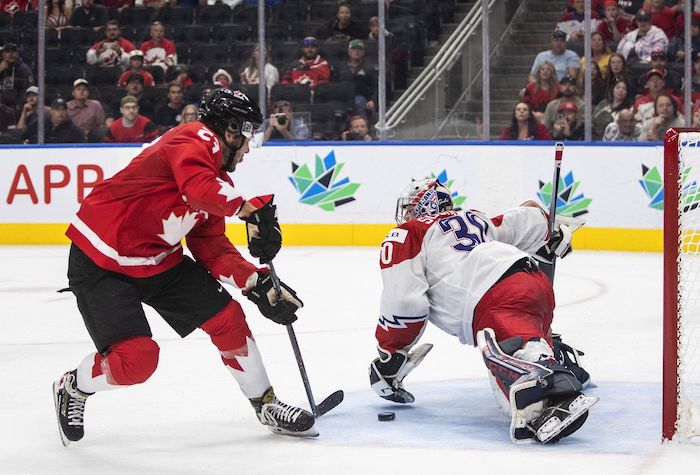
News release from the Red Deer Rebels and Hockey Canada
Hockey Canada, in partnership with the Canadian Hockey League (CHL) and International Ice Hockey Federation (IIHF), has announced that the 2027 IIHF World Junior Championship will be played in Edmonton and Red Deer, Alberta, from Dec. 26, 2026 to Jan. 5, 2027.
The successful bid represents a partnership between OEG Sports & Entertainment, the Red Deer Rebels, Hockey Alberta, the Cities of Edmonton and Red Deer, and the Province of Alberta, which made an $11 million commitment in February 2024 to host events in communities throughout the province.
“We are excited to bring the IIHF World Junior Championship back to Edmonton and Red Deer, and to give hockey fans in Alberta and across the country the opportunity to watch the top under-20 players compete for a gold medal right here in Canada,” said Dean McIntosh, senior vice-president of revenue, fan experience and community impact with Hockey Canada. “Both cities have been successful hosts of IIHF and other high-profile international events, and we know our partners in Edmonton and Red Deer will host a world-class event for players, teams, fans and volunteers alike.”
The 18,500-seat Rogers Place, home of the National Hockey League’s Edmonton Oilers and Western Hockey League’s Edmonton Oil Kings, will serve as the primary competition venue and host 17 games, including both semifinals and the medal games. The additional 14 games are set for the 7,050-seat Marchant Crane Centrium, home of the WHL’s Red Deer Rebels.
“Alberta is ready to welcome visitors from around the world for the International Ice Hockey Federation World Junior Championship,” said Andrew Boitchenko, minister of tourism and sport for Alberta. “This event celebrates the spirit of international competition and our province’s passion for hockey, while showcasing Alberta as a world-class destination for sporting events.”
“Edmonton is thrilled to co-host the IIHF World Junior Championship. This tournament is a fantastic opportunity to watch the world’s best junior hockey players right here in our community, showcasing emerging talent and inspiring a new generation of athletes,” said Andrew Knack, mayor of Edmonton. “Hosting world-calibre events like this also injects vital tourism dollars into our local economy, boosts our city’s vibrancy, and solidifies Edmonton’s reputation as a premiere sports tourism destination.”
Edmonton last hosted the IIHF World Junior Championship in August 2022, which was rescheduled from its traditional winter slot due to the COVID-19 pandemic. The gold medal game at the 2022 event was an instant classic, with Mason McTavish making a game-saving play in overtime and Kent Johnson netting the game-winner just over a minute later to give Canada its 19th World Juniors gold medal. The city also hosted in 2021 without fans, and was a co-host with Calgary for the 2012 edition of the event. Red Deer was a co-host for the cancelled 2022 World Juniors, and first hosted the annual under-20 tournament in 1995.
“We are proud to welcome the 2027 IIHF World Junior Championship back to our region,” said Jesse Smith, chief executive officer of Tourism Red Deer. “Red Deer’s love for the game and our hospitality will ensure an unforgettable experience for every athlete and fan.”
“The World Juniors give Edmonton an extraordinary opportunity to showcase our city on the world stage,” said Arlindo Gomes, vice-president of business development and venues management with Explore Edmonton. “This event strengthens our global reputation as a premier international sport destination while delivering more than $90 million in total economic impact to our community and inspiring the next generation of hockey players and fans. Edmonton loves hockey and we cannot wait to welcome global athletes and fans.”
Pre-tournament games for the 2027 World Juniors are expected to take place throughout Alberta, allowing fans across the province to watch the best junior hockey players from 10 countries before the puck officially drops in Edmonton and Red Deer on Boxing Day.
With demand for tickets expected to exceed availability, more information about a priority ticket draw and tournament ticket packages will be announced in the coming months. Fans looking to receive updates about the 2027 IIHF World Junior Championship as soon as they become available can sign up to become a Hockey Canada Insider today.
“On behalf of all of us at OEG Sports & Entertainment, we are proud to once again be hosting the IIHF World Junior Championship and the best young stars on the planet,” said Stu Ballantyne, president and chief operating officer of Rogers Place and ICE District. “The World Juniors is one of the most celebrated tournaments in hockey, and bringing it back to Edmonton is an honour for our city, our fans and our entire organization. ICE District and Rogers Place were built to facilitate and showcase the very best in sport and entertainment, and we look forward to working closely with Hockey Canada and other partners to deliver an unforgettable experience for the athletes, fans and the global hockey community.”
“We are beyond excited for our fans, partners and community to once again welcome the hockey world to Red Deer,” said Merrick Sutter, senior vice-president of the Red Deer Rebels. “This is a community that loves events, and we know their passion will be on full display once again next December.”
For more information on Hockey Canada and the 2027 IIHF World Junior Championship, please visit HockeyCanada.ca, or follow along through social media on Facebook, X, Instagram and TikTok.
Bruce Dowbiggin
Maintenance Mania: Since When Did Pro Athletes Get So Fragile?
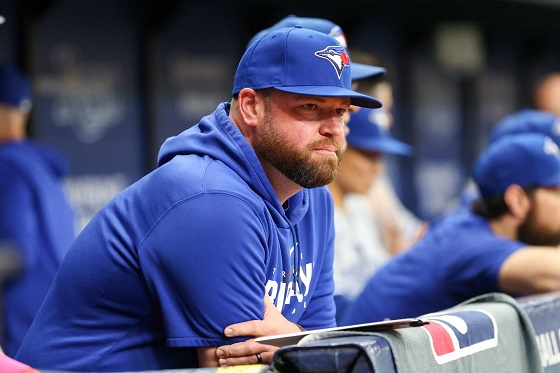
The Los Angeles Dodgers’ Game 7 win in the World Series over the Toronto Blue Jays averaged a combined 27.3 million viewers. By comparison, the 2025 NBA Finals’ Game 7 between the Oklahoma City Thunder and Indiana Pacers averaged 16.4 million viewers on ABC.
Granted, the MLB had the L.A. market as backstop while the NBA featured two small-market teams. But there was no second U.S. home market in the numbers, because Toronto doesn’t count in U.S. ratings. BTW: Canadian ratings were spectacular with over 18.5 million viewers watching some or all of Game 7.
For those who thought baseball was dead as a TV property, 2025 was a golden throwback to another age. Likewise, the NBA Final— with its Canadian MVP—was a flashback to the days when pro basketball played second fiddle to college basketball.
What’s wrong with pro basketball? Many think tying itself so closely with the DEI network ESPN has put off many. The obsession with the L.A. Lakers is off-putting, too. Betting scandals don’t help. But more than anything the NBA is tainted by its stars taking “maintenance days” off for R&R in the middle of the season.
Fans who purchase tickets when the schedule is announced to see LeBron James or Zion Williamson have no recourse months later when the coach sits a player on those maintenance nights. TV schedulers also see their feature primetime games blown up. According to surveys, 65 percent of fans express disappointment when they attend a game without the expected stars.
The trend really caught wind when Kawhi Leonard, with the Toronto Raptors over a barrel, took frequent maintenance days on his way to the 2019 NBA title. Leonard supporters might say that the Raptors beat a battered Golden State Warriors team missing numerous starters like Kevin Durant and Draymond Green whose injuries sidelined them for the Final.

Maybe. (Leonard continues his maintenance routine with the L.A. Clippers.) But the wholesale use of maintenance days during the season has fans asking, Are today’s players more vulnerable to the stresses of a long season or were the players of the Michael Jordan era just mentally tougher?
Just look at Jordan’s record from 1985 to 2003. In an era where there were no private jets, no personal chefs, no advanced sports medicine, Air Jordan flew all 82 games/missions nine times in his career. In fact, outside the two years he played baseball or there was a labour disruption, he played 78 or fewer games just once. This with the Detroit Pistons Bad Boys hammering him.
In defence of today’s stars, the more compact schedule has resulted in an almost 25 percent increase in injuries. The bar for athletic achievement— height, speed, recovery— has gone a lot higher. And the players have to protect the phenomenal salaries they now draw versus Jordan’s day.
Still. There is caution and then there is indulgence. Coaches in danger of losing their job are subject to taking a knee when their stars tap out for a game. The NBA knows its fans were not onboard with the practice, as the TV ratings show.
What about maintenance in other sports? It was a big issue throughout the baseball season— in particular the playoffs. Managers and pitching coaches doing strategy by pitch count. In the ALCS and World Series, a cautious Blue Jays manger John Schneider yanked starters Kevin Gausman, Trey Yesavage and Max Scherzer with seemingly more pitches in their arm to bring in mediocre bullpen pitchers.
Schneider blew Game 5 of the Series with some wonky pitch-count decisions. But, in the end, it worked out for Schneider as he finally threw caution to the wind in the final games versus the Dodgers, using his starters from the bullpen and allowing more elevated pitch counts.

Not so much success for Detroit manager A.J. Hinch who yanked his ace Tarik Skubal, up 2-1, after 99 pitches in the final ALDS game against Seattle. His bullpen then blew the game in 15 torturous innings. Surely Hinch could get more from Skubal. In his day Nolan Ryan would throw 125-140 pitches in games. But Hinch was protecting the arm of his ace, who might just be traded or sign with another team in the next 12 months.
This protection racket has introduced a news strategy of running up pitch counts in at-bats against excellent pitchers early in a game so the hitters can get to the bullpens when the starters hit the magic pitch count. Managers are now having to bring in their stoppers in the sixth or seventh inning if the lead is getting away from them.
Fans, meanwhile, are confused why today’s pampered stars still tear up their arms, needing Tommy John elbow surgery despite the lowered innings. counts. Meanwhile everyday players never get tired?
So don’t be surprised when your fans turn off the TV because they see stars prioritizing their salaries over win/ loss.
Bruce Dowbiggin @dowbboy is the editor of Not The Public Broadcaster A two-time winner of the Gemini Award as Canada’s top television sports broadcaster, his new book Deal With It: The Trades That Stunned The NHL And Changed hockey is now available on Amazon. Inexact Science: The Six Most Compelling Draft Years In NHL History, his previous book with his son Evan, was voted the seventh-best professional hockey book of all time by bookauthority.org . His 2004 book Money Players was voted sixth best on the same list, and is available via brucedowbigginbooks.ca.
-

 Health2 days ago
Health2 days agoCDC’s Autism Reversal: Inside the Collapse of a 25‑Year Public Health Narrative
-

 Crime2 days ago
Crime2 days agoCocaine, Manhunts, and Murder: Canadian Cartel Kingpin Prosecuted In US
-

 Daily Caller2 days ago
Daily Caller2 days agoBREAKING: Globalist Climate Conference Bursts Into Flames
-

 Business13 hours ago
Business13 hours agoNew airline compensation rules could threaten regional travel and push up ticket prices
-

 Health2 days ago
Health2 days agoBREAKING: CDC quietly rewrites its vaccine–autism guidance
-

 Great Reset1 day ago
Great Reset1 day agoEXCLUSIVE: The Nova Scotia RCMP Veterans’ Association IS TARGETING VETERANS with Euthanasia
-

 Energy2 days ago
Energy2 days agoHere’s what they don’t tell you about BC’s tanker ban
-
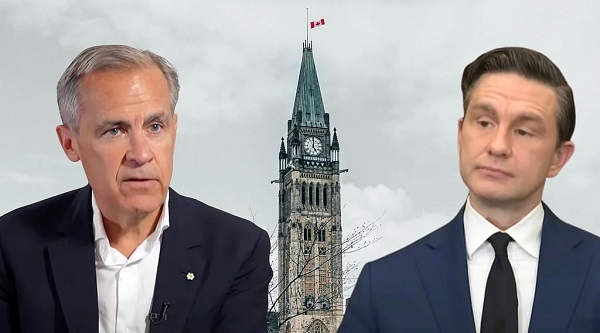
 Bruce Dowbiggin2 days ago
Bruce Dowbiggin2 days agoBurying Poilievre Is Job One In Carney’s Ottawa



